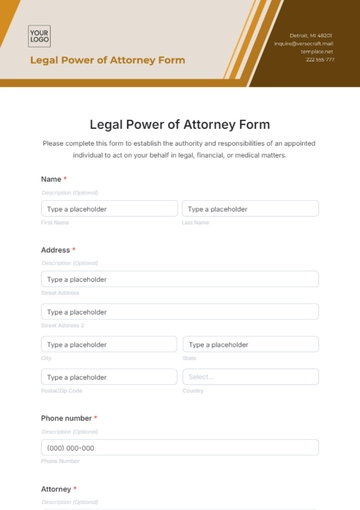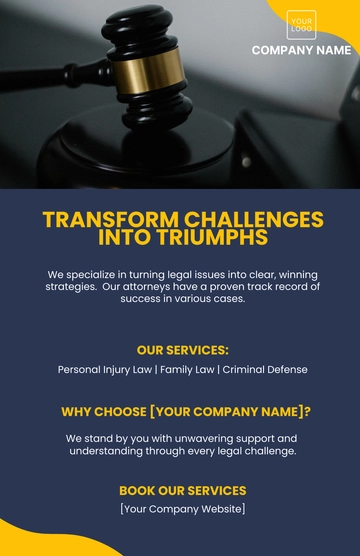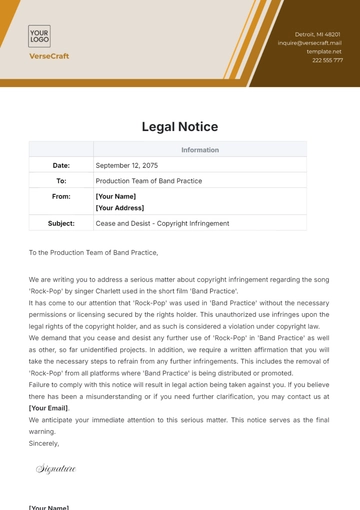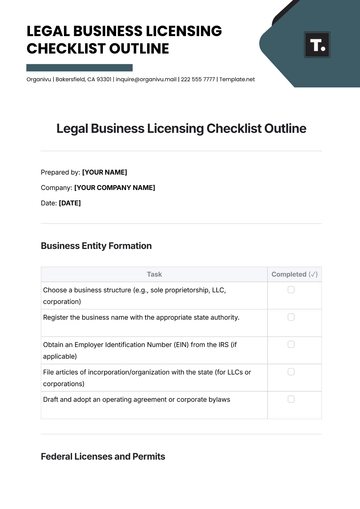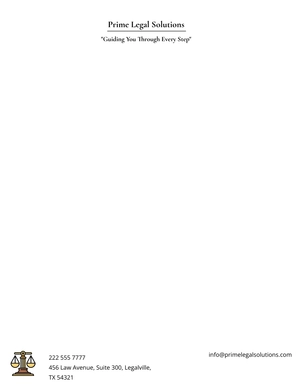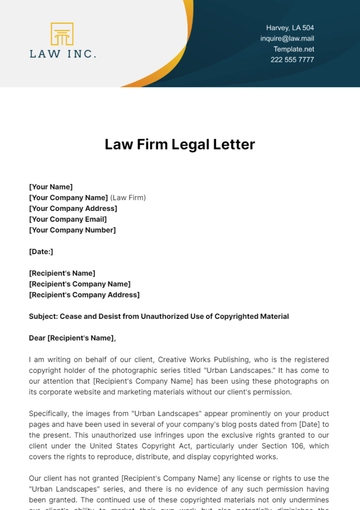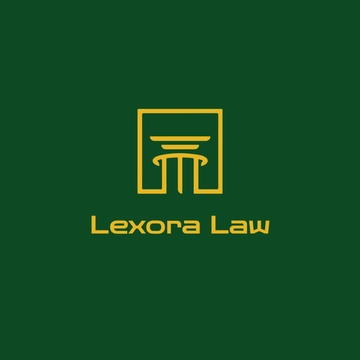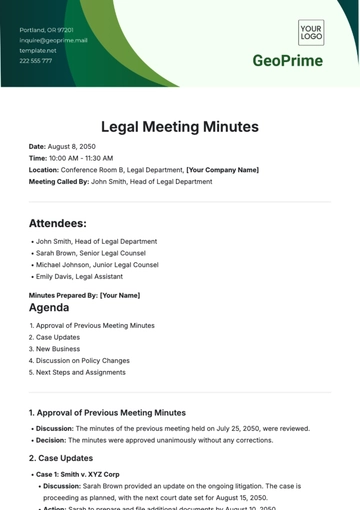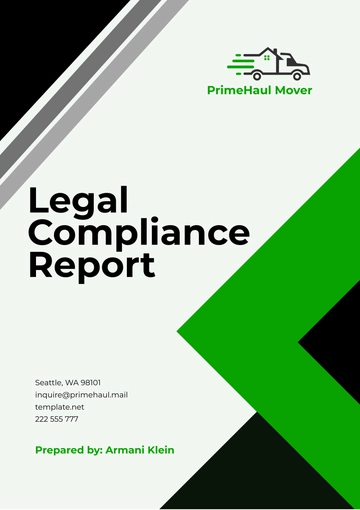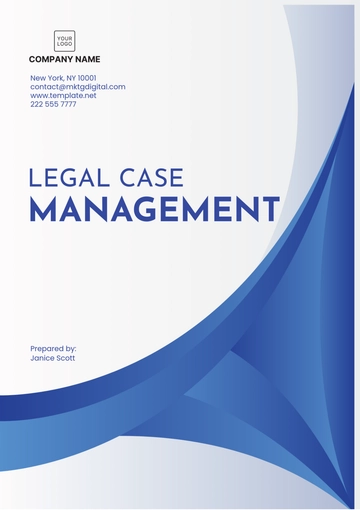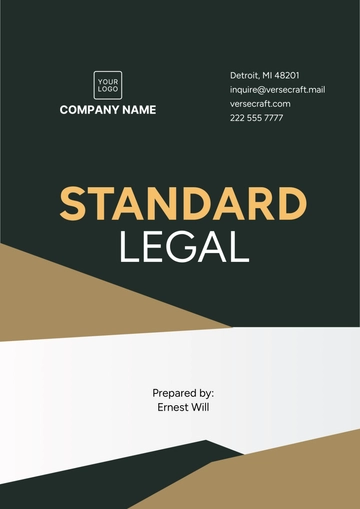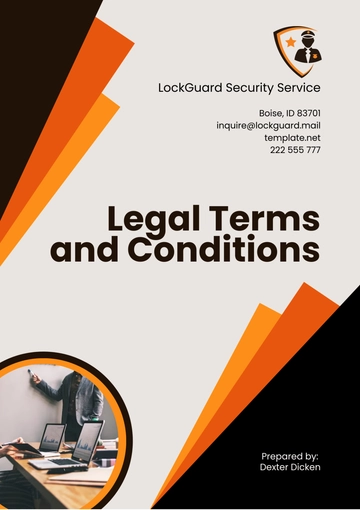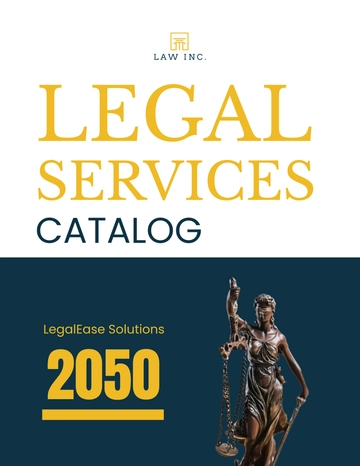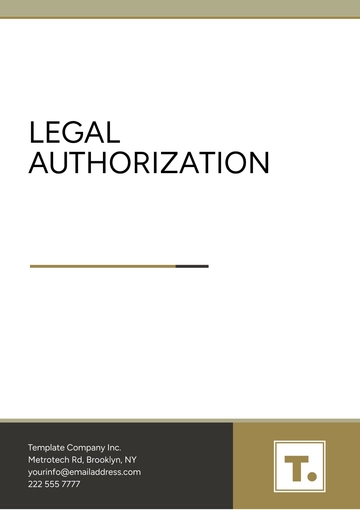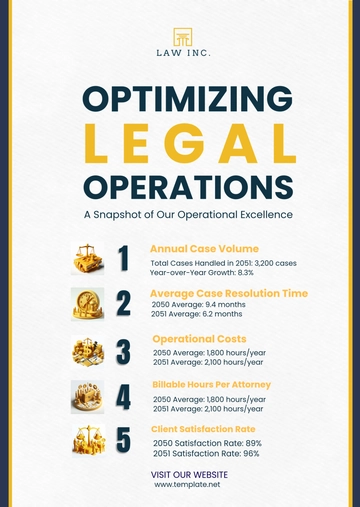Free Legal Intellectual Property Transparency and Disclosure Guide
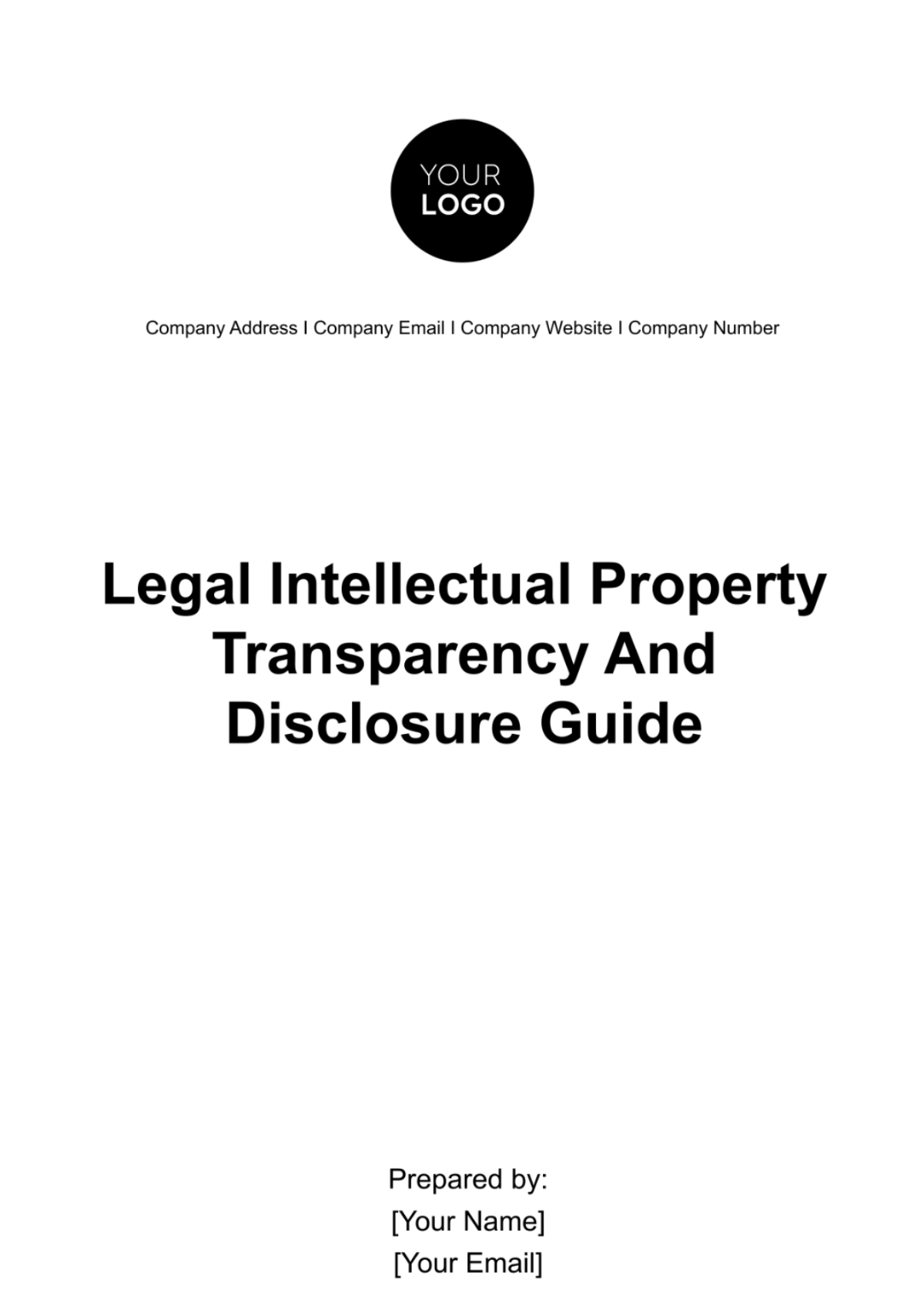
I. Introduction
A. Purpose
The purpose of this Legal Intellectual Property Transparency and Disclosure Guide is to ensure that [Your Company Name] operates with integrity, transparency, and compliance in all matters relating to intellectual property (IP). By establishing clear guidelines and procedures for the management and disclosure of IP assets, this guide aims to:
Safeguard [Your Company Name]'s intellectual property assets.
Facilitate responsible and ethical handling of IP-related information.
Promote trust and confidence among stakeholders, including employees, partners, investors, and customers.
Mitigate the risk of intellectual property disputes and infringement allegations.
B. Scope
This guide encompasses the entire lifecycle of intellectual property within [Your Company Name], from conception and creation to protection, utilization, and enforcement. It applies to all individuals and entities associated with [Your Company Name], including:
Employees at all levels and departments.
Contractors, consultants, and temporary staff engaged by [Your Company Name].
Partners, collaborators, and vendors involved in joint ventures, licensing agreements, or other business arrangements.
Shareholders, investors, regulators, and other external stakeholders with an interest in [Your Company Name]'s IP assets.
C. Audience
This guide is designed to be accessible and relevant to a diverse audience, including but not limited to:
Legal and compliance professionals responsible for interpreting and enforcing IP laws and regulations.
Intellectual property specialists tasked with managing and maintaining [Your Company Name]'s IP portfolio.
Research and development teams involved in innovation and product development.
Marketing and sales personnel responsible for branding, advertising, and promotional activities.
Executive leadership and board members overseeing strategic decisions related to IP management and disclosure.
D. Definitions
To ensure clarity and consistency in terminology, the following definitions are provided for key terms used throughout this guide:
Intellectual Property (IP): Intellectual property refers to intangible assets resulting from human creativity and innovation, including but not limited to patents, trademarks, copyrights, and trade secrets.
Confidential Information: Confidential information encompasses proprietary data, trade secrets, and other sensitive information that is not publicly disclosed and holds value to [Your Company Name].
II. Intellectual Property Overview
A. Definition of Intellectual Property (IP)
Intellectual property (IP) refers to intangible assets resulting from human creativity and innovation. These assets are legally protected and can include inventions, literary and artistic works, designs, symbols, names, and images used in commerce. The main categories of intellectual property include patents, trademarks, copyrights, and trade secrets.
B. Importance of IP
Intellectual property plays a critical role in [Your Company Name]'s success and competitiveness in the marketplace. The importance of IP can be summarized as follows:
Protection of Innovations: IP protection encourages innovation by providing creators and inventors with exclusive rights to their creations. This protection incentivizes investment in research and development, driving technological advancements and fostering economic growth.
Brand Recognition and Reputation: Trademarks and branding assets are essential for building brand recognition and consumer trust. By protecting its trademarks, [Your Company Name] can differentiate its products and services from competitors and maintain its reputation for quality and reliability.
Market Exclusivity: Patents grant [Your Company Name] exclusive rights to exploit its inventions for a limited period, allowing the company to control the use and commercialization of its proprietary technologies. This exclusivity can confer a competitive advantage and generate revenue through licensing agreements and product sales.
Revenue Generation: Intellectual property can be monetized through various means, including licensing, franchising, and selling IP assets. By leveraging its IP portfolio strategically, [Your Company Name] can generate additional revenue streams and maximize the return on its investment in innovation.
Risk Management and Legal Compliance: Proper management of intellectual property helps [Your Company Name] mitigate the risk of IP infringement claims and legal disputes. By understanding and respecting the IP rights of others, [Your Company Name] can avoid costly litigation and maintain a positive relationship with its industry peers and competitors.
III. [Your Company Name] IP Portfolio
A. Overview
[Your Company Name] maintains a diverse portfolio of intellectual property assets aimed at protecting its innovations, brands, and creative works. The IP portfolio includes patents, trademarks, copyrights, and trade secrets, each serving a unique purpose in safeguarding [Your Company Name]'s competitive advantage and market position.
B. Patents
Patents grant [Your Company Name] exclusive rights to its inventions, preventing others from making, using, selling, or importing the patented technology without permission. [Your Company Name] actively pursues patents for its novel inventions and technological advancements, ensuring that its innovations are protected and commercially exploitable.
C. Trademarks
Trademarks are essential for distinguishing [Your Company Name]'s products and services from those of competitors and establishing brand identity and goodwill. [Your Company Name] registers trademarks for its logos, slogans, product names, and other branding elements to prevent unauthorized use and infringement by third parties.
D. Copyrights
Copyright protection extends to original literary, artistic, and creative works, including software code, marketing materials, design assets, and written content. [Your Company Name] asserts copyright protection over its original works to control their reproduction, distribution, and public display, safeguarding against unauthorized copying and plagiarism.
E. Trade Secrets
Trade secrets encompass confidential information, such as proprietary formulas, manufacturing processes, customer lists, and business strategies, which provide [Your Company Name] with a competitive advantage. [Your Company Name] employs robust measures to protect its trade secrets from unauthorized disclosure or misappropriation, including non-disclosure agreements (NDAs) and restricted access protocols.
IV. Transparency and Disclosure Policy
A. Policy Statement
[Your Company Name] is committed to maintaining transparency and integrity in all matters related to intellectual property (IP) management and disclosure. The company recognizes the importance of responsible IP stewardship in fostering trust among stakeholders, promoting innovation, and safeguarding [Your Company Name]'s competitive position in the marketplace.
B. Compliance with Laws and Regulations
[Your Company Name] adheres to all relevant laws, regulations, and international treaties governing intellectual property rights. The company ensures compliance with patent, trademark, copyright, and trade secret laws, as well as data privacy and confidentiality regulations, in all jurisdictions where it operates.
C. Responsibility for Disclosure
All employees, contractors, and stakeholders of [Your Company Name] have a responsibility to disclose any inventions, creations, or discoveries that may qualify for intellectual property protection. Individuals must promptly report such disclosures to the appropriate channels within [Your Company Name] for evaluation and potential patenting or protection.
D. Disclosure Process
The disclosure process at [Your Company Name] involves several steps, including identification, documentation, evaluation, and decision-making. Once an invention or innovation is disclosed, [Your Company Name]'s intellectual property team conducts a thorough review to assess its novelty, utility, and commercial potential, determining whether to pursue patent protection or other forms of IP rights.
E. Record Keeping and Documentation
[Your Company Name] maintains comprehensive records of all intellectual property disclosures, patent filings, trademark registrations, and other relevant documentation. Proper documentation ensures transparency, traceability, and accountability in IP management, facilitating internal audits, compliance reviews, and due diligence assessments.
V. Intellectual Property Disclosure Procedure
A. Identification of IP
Employees, contractors, and stakeholders are encouraged to identify and disclose any potential intellectual property (IP) arising from their work or collaboration with [Your Company Name]. This includes inventions, discoveries, designs, software code, and other creative works that may be eligible for patent, trademark, copyright, or trade secret protection.
B. Documentation Requirements
When disclosing intellectual property, individuals are required to provide detailed documentation and information to facilitate the evaluation process. This may include:
Description of the invention, including its novelty and utility.
Supporting evidence or data demonstrating the invention's feasibility or effectiveness.
List of inventors or contributors involved in the creation of the IP.
Any prior art or existing technologies relevant to the invention.
Disclosure of any prior agreements or obligations related to the IP, such as confidentiality agreements or employment contracts.
C. Submission Process
Intellectual property disclosures should be submitted through [Your Company Name]'s designated disclosure portal or platform. The submission process may involve completing a standardized disclosure form and attaching relevant supporting documents, diagrams, or prototypes.
D. Review and Evaluation
Upon receipt of an intellectual property disclosure, [Your Company Name]'s intellectual property team conducts a thorough review and evaluation of the submission. This may involve assessing the novelty, utility, and commercial potential of the invention or innovation, as well as conducting prior art searches and market analyses.
E. Notification and Feedback
The individual or team responsible for the intellectual property disclosure will receive timely notification and feedback regarding the outcome of the evaluation process. If the IP is deemed eligible for protection, [Your Company Name] may proceed with patent filing, trademark registration, or other appropriate measures to secure and safeguard the IP rights.
VI. Confidential Information Protection
A. Definition of Confidential Information
Confidential information includes any proprietary or sensitive data that is not publicly known and holds value to [Your Company Name]. This may include trade secrets, proprietary technology, financial information, customer data, and business strategies.
B. Handling of Confidential Information
Employees and stakeholders must exercise caution and discretion when handling confidential information. They are required to adhere to [Your Company Name]'s policies and procedures regarding the protection, sharing, and disclosure of confidential information, both within and outside the organization.
C. Non-Disclosure Agreements (NDAs)
[Your Company Name] may enter into non-disclosure agreements (NDAs) with employees, contractors, partners, and third parties to protect confidential information from unauthorized disclosure or misuse. NDAs outline the terms and conditions governing the use and handling of confidential information and may include provisions for legal recourse in the event of breach or violation.
D. Security Measures
[Your Company Name] implements robust security measures to safeguard confidential information from unauthorized access, theft, or disclosure. This may include encryption protocols, access controls, password protection, and employee training programs on data security best practices. Additionally, [Your Company Name] regularly reviews and updates its security policies and technologies to adapt to evolving threats and regulatory requirements.
VII. [Your Company Name] IP Transparency Reports
A. Purpose
The purpose of [Your Company Name] IP Transparency Reports is to provide stakeholders with comprehensive information about [Your Company Name]'s intellectual property (IP) portfolio, activities, and initiatives. These reports serve to enhance transparency, accountability, and trust among investors, partners, customers, and the general public.
B. Frequency of Reports
[Your Company Name] publishes IP Transparency Reports on a regular basis, typically annually or semi-annually, to coincide with financial reporting cycles or strategic planning periods. Additionally, ad-hoc reports may be issued in response to significant developments or events impacting [Your Company Name]'s IP landscape.
C. Contents of Reports
IP Transparency Reports contain a wealth of information related to [Your Company Name]'s IP assets and activities, including:
Overview of [Your Company Name]'s IP portfolio, including patents, trademarks, copyrights, and trade secrets.
Summary of IP filings, grants, and registrations during the reporting period.
Analysis of IP enforcement actions, litigation, and settlements.
Details of IP licensing agreements, partnerships, and collaborations.
Disclosure of any material IP-related risks or challenges facing [Your Company Name].
Forward-looking statements and strategic priorities for IP management and innovation.
D. Distribution of Reports
IP Transparency Reports are made available to stakeholders through various channels, including [Your Company Name]'s corporate website, investor relations portal, regulatory filings, and press releases. Additionally, [Your Company Name] may engage in proactive outreach efforts to key stakeholders, such as hosting webinars, investor briefings, or industry conferences to discuss the findings and implications of the reports.
VIII. Intellectual Property Governance
A. Intellectual Property Committee
[Your Company Name] establishes an Intellectual Property Committee tasked with overseeing the governance and strategic management of the company's intellectual property assets. The committee comprises senior executives, legal counsel, IP specialists, and representatives from relevant business units or departments.
B. Responsibilities of the Committee
The Intellectual Property Committee's responsibilities include, but are not limited to:
Setting IP strategy and objectives aligned with [Your Company Name]'s overall business goals and priorities.
Reviewing and approving major IP-related decisions, including patent filings, trademark registrations, and licensing agreements.
Monitoring industry trends, competitive landscapes, and regulatory developments impacting [Your Company Name]'s IP portfolio.
Conducting periodic reviews and assessments of [Your Company Name]'s IP policies, processes, and performance metrics.
Providing guidance and support to business units and teams on IP-related matters, including risk management and dispute resolution.
C. Decision-Making Process
The Intellectual Property Committee follows a structured decision-making process, which may include:
Gathering relevant data and analysis from internal and external sources.
Conducting deliberations and discussions to evaluate options and alternatives.
Consulting with subject matter experts, legal advisors, and external stakeholders as needed.
Reaching consensus or making recommendations based on the committee's collective expertise and judgment.
Documenting decisions, rationale, and action plans for implementation and follow-up.
IX. Training and Awareness
A. Training Programs
[Your Company Name] prioritizes training and awareness programs to ensure that employees and stakeholders understand their roles and responsibilities regarding intellectual property (IP) management and compliance. These programs are designed to:
Educate employees about the importance of IP protection and the potential impact of IP infringement on [Your Company Name]'s business.
Provide guidance on identifying and disclosing potential IP assets, including inventions, trademarks, and copyrights.
Train employees on IP-related policies, procedures, and best practices for handling confidential information and avoiding infringement.
Offer specialized training for IP professionals, legal counsel, and technical staff involved in IP prosecution, enforcement, and licensing activities.
B. Awareness Campaigns
[Your Company Name] conducts awareness campaigns to reinforce key messages and promote a culture of respect for intellectual property rights. These campaigns may include:
Internal communications, such as newsletters, intranet articles, and email updates, highlighting IP-related news, events, and success stories.
Workshops, seminars, and brown bag sessions featuring guest speakers, subject matter experts, and industry leaders discussing IP trends, case studies, and emerging issues.
Recognition programs to acknowledge and celebrate employee contributions to innovation and IP creation, fostering a sense of ownership and pride in [Your Company Name]'s intellectual assets.
External outreach initiatives, such as participation in industry conferences, webinars, and community events to share knowledge and promote thought leadership in IP management and innovation.
X. Enforcement of IP Rights
A. Legal Actions
[Your Company Name] is committed to vigorously enforcing its intellectual property (IP) rights to protect against infringement, misappropriation, and unauthorized use of its IP assets. In cases of suspected infringement, [Your Company Name] may pursue legal actions, including:
Cease-and-desist letters demanding the cessation of infringing activities and the removal of infringing content.
Filing lawsuits in relevant jurisdictions seeking injunctive relief, damages, and other remedies available under applicable IP laws.
Initiating administrative proceedings before regulatory agencies or industry bodies to address IP disputes and violations.
Pursuing alternative dispute resolution (ADR) mechanisms, such as arbitration or mediation, to resolve IP disputes efficiently and cost-effectively.
B. Remedies for IP Infringement
In the event of successful enforcement actions, [Your Company Name] may seek various remedies for IP infringement, including:
Injunctions prohibiting the continued infringement of [Your Company Name]'s IP rights and requiring the infringing party to cease its infringing activities immediately.
Monetary damages compensating [Your Company Name] for the economic harm caused by the infringement, including lost profits, licensing fees, and statutory damages.
Seizure and destruction of counterfeit or pirated goods, as well as the forfeiture of infringing materials and equipment used in the production or distribution of infringing products.
Royalties or licensing fees for the use of [Your Company Name]'s IP by third parties, either through voluntary licensing agreements or court-ordered licensing arrangements.
Public disclosure of court judgments or settlements to deter future infringement and protect [Your Company Name]'s reputation and market integrity.
XI. Continuous Improvement
A. Feedback Mechanisms
[Your Company Name] encourages feedback from employees, stakeholders, and partners regarding its intellectual property (IP) policies, procedures, and practices. Feedback mechanisms may include:
Employee surveys and focus groups to gather input on IP training programs, awareness campaigns, and overall satisfaction with IP management processes.
Stakeholder consultations and interviews to solicit feedback on [Your Company Name]'s IP transparency reports, licensing practices, and dispute resolution mechanisms.
Collaboration with industry peers, professional associations, and standards organizations to share best practices, benchmark performance, and identify opportunities for improvement in IP governance and compliance.
B. Periodic Review of Policies and Procedures
[Your Company Name] conducts periodic reviews and assessments of its intellectual property (IP) policies, procedures, and controls to ensure alignment with business objectives, regulatory requirements, and industry standards. These reviews involve:
Evaluation of policy effectiveness, including clarity, comprehensiveness, and relevance to [Your Company Name]'s IP management goals and priorities.
Identification of emerging risks, trends, and regulatory changes impacting [Your Company Name]'s IP landscape, such as advances in technology, changes in market dynamics, or shifts in legal standards.
Consultation with internal stakeholders, legal counsel, and subject matter experts to solicit feedback, assess needs, and prioritize areas for improvement in IP governance and compliance.
Revision and updating of IP policies, procedures, and training materials based on feedback, lessons learned, and evolving business requirements to enhance effectiveness, efficiency, and compliance with [Your Company Name]'s IP strategy.
C. Implementation of Best Practices
[Your Company Name] adopts and implements best practices in intellectual property (IP) management gleaned from industry benchmarks, regulatory guidance, and peer-reviewed research. These practices encompass:
Establishing robust IP governance structures, roles, and responsibilities to ensure accountability, transparency, and oversight of [Your Company Name]'s IP assets and activities.
Investing in advanced technologies and tools for IP portfolio management, analytics, and enforcement to optimize resource allocation, mitigate risks, and maximize the value of [Your Company Name]'s IP investments.
Fostering a culture of innovation and IP stewardship through employee recognition programs, incentives for IP disclosures, and cross-functional collaboration to drive creativity, productivity, and competitiveness.
Engaging in strategic partnerships, collaborations, and alliances with industry peers, research institutions, and government agencies to leverage complementary expertise, resources, and networks for mutual benefit and innovation acceleration.
Monitoring and adapting to changes in the global IP landscape, including emerging trends, disruptive technologies, and evolving legal and regulatory frameworks, to anticipate challenges and opportunities and position [Your Company Name] for long-term success in the industry.
- 100% Customizable, free editor
- Access 1 Million+ Templates, photo’s & graphics
- Download or share as a template
- Click and replace photos, graphics, text, backgrounds
- Resize, crop, AI write & more
- Access advanced editor
Unlock comprehensive transparency and disclosure practices for your intellectual property (IP) assets using our Legal Intellectual Property Transparency and Disclosure Guide Template available on Template.net. This editable and customizable template empowers you to establish clear guidelines and procedures for disclosing and managing IP information. With our Ai Editor Tool, tailor the guide to your organization's unique requirements. Enhance transparency and foster trust with stakeholders by implementing robust IP disclosure practices.
